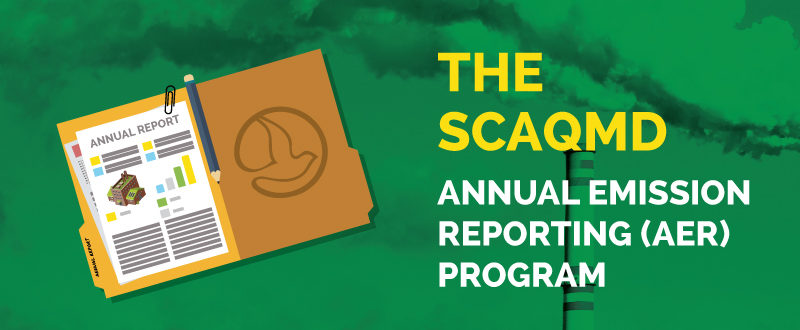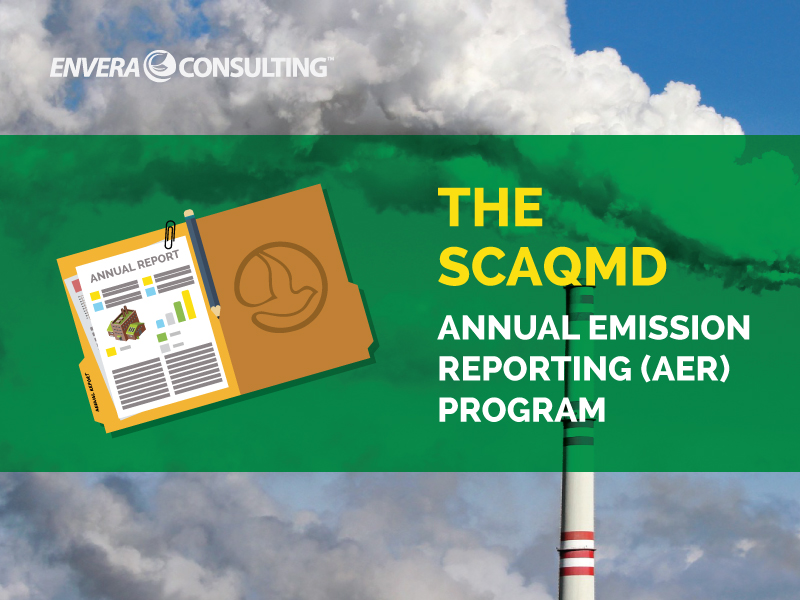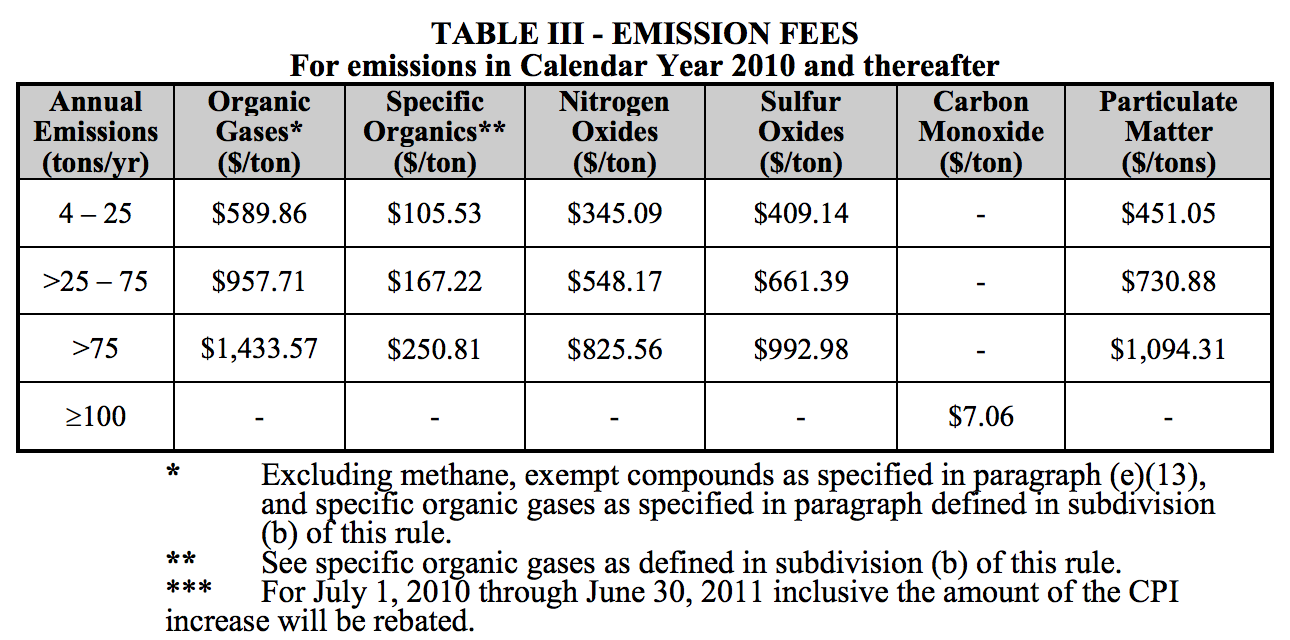

“In this world nothing can be said to be certain, except death and taxes.” — Benjamin Franklin
When it comes to air quality compliance, you can add one more certainty to the list: annual emission reports (AER).
The AER program has a number of similarities to taxes:
Taxes: You report how much money you made in a given year to an agency.
AER: You report how many air emissions you produced a given year to an agency.
Taxes: You pay money to an agency based on the amount of money you made in a given year.
AER: You pay money to an agency based on the number of air pollutants you produced in a given year.
Taxes: You can be audited based on the information you submit.
AER: You can be audited based on the information you submit.
Taxes: They are due every year.
AER: They are due every year.
Taxes: There are penalties for late or un-submitted tax reports.
AER: There are penalties for late or un-submitted AERs.
While these are only a few of the numerous similarities between AERs and taxes, they should emphasize the importance of the AER program.
Facilities with a permit from the South Coast Air Quality Management District (also known as the SCAQMD or AQMD) should know about the AER program and, more importantly, whether or not an AER submission is even required.
In this article, we break down the basics of the AER program into two parts:
Part I introduces you to the AER program while highlighting important details such as deadlines and associated fees.
Part II contains a short walk-through of the submission process and provides useful strategies to help you prepare your own AER.
Part I: What Is an AER?
An AER is nothing more than an emission inventory for your facility. This means it includes all types and amounts of air pollutants emitted by your facility’s operations during the reporting year (i.e., the previous calendar year).
In the AQMD, the AER program requires certain facilities to:
- Report their criteria, and toxic air emissions from both permitted and non-permitted sources for the past year.
- Pay a fee for the pollutants that they emitted above a given threshold (found in Rule 301, Table III).
Not All Emissions Need to Be Reported Within the AER
While the AER program requires emissions to be reported from both permitted and un-permitted sources, there are certain emission sources that are exempt from reporting. These include:
- On-road and off-road motor vehicles (e.g., cars, trucks, forklifts, construction equipment)
- Equipment registered through the California Air Resources Board’s Portable Equipment Registration Program (PERP)
- Architectural coatings (e.g., materials subject to Rule 1113)
- Utility equipment (e.g., landscaping equipment)
- Clean air solvents
- Non-combustion charbroilers and deep-fat fryers operated by restaurants and/or establishments servicing consumers
The required fees on the reported emissions are proportional to the amount of emissions reported. The fees are as follows:

It is important to note that although the pollutant thresholds set in Rule 301 seldom change, the associated fees change on an annual basis. These fees are updated when Rule 301 is updated, which occurs annually on July 1.
Who Needs to File an AER?
Facilities are required to file an AER if they meet one of the following conditions:
- The facility emissions exceed the reporting thresholds for criteria pollutants which are:
>= 4 tons/year (TPY) of volatile organic compounds (VOCs), nitrogen oxide (NOx), sulfur oxide (SOx), particulate matter (PM); or
>= 100 TPY carbon monoxide (CO)
- The facility is subject to the AB 2588 program for air toxics.
- The facility receives a notification to file an AER from AQMD (even if the facility’s emissions are below the reporting thresholds or no fees are due).
When Does an AER Need to Be Filed By?
To avoid late surcharges, Rule 301 requires that an AER and its associated fees be filed within sixty days after January 1 of each year.
The actual submission date tends to change each year, depending on whether or not the sixtieth day falls on a weekend or a Monday, when the AQMD is closed. As a result, it is best to check the AQMD’s website to know exactly when your AER is due.
Why Is an AER Needed?
Aside from the simple reason that AERs are required by Rule 301, there are four other reasons as to why the AER is necessary:
- The capture of annual emissions from industrial sources serves as a critical component in assessing progress towards attainment of the National Ambient Air Quality Standards (NAAQS) within the AQMD.
- The AQMD uses the data acquired by the AER program to assess its air-quality control efforts and plan new control strategies accordingly.
- The AQMD uses the AER to assess applicability of a facility to the Title V and/or RECLAIM programs, both of which play major roles in AQMD’s air-quality control efforts.
- The fees collected from the AER program fund the AQMD’s air-quality regulatory efforts, in addition to being a source of revenue for the district.
Where Do I Submit My AER?
AER’s are required to be submitted in duplicate to the AQMD, both electronically and as a hard copy. Electronic submissions are done directly within the online AER reporting tool. Hard-copy submissions are mailed to one of two addresses, depending on how you are submitting the hard copy.
If you are using U.S. mail, you can mail the AER to the address below:
South Coast Air Quality Management District Annual Emission Reporting Program File No. 54493 Los Angeles, CA 90074-4493If you are delivering your AER by hand or via courier, you should use the address below:
South Coast Air Quality Management District ATTN: Finance Cashier Annual Emission Reporting Program 21865 Copley Drive Diamond Bar, CA 91765-4178In either case, we advise that you obtain a tracking number when you submit your AER hard copy. That is the best way to obtain confirmation that your AER was mailed out by the due date of the report.
Below is a list of delivery methods that provide tracking:
- U.S. Registered mail
- U.S. Certified mail
- Private courier
- UPS/FedEx, etc.
Part II: How Do I file an AER?
Filing an AER is done using a six-step process.
Step 1: Facility Registration
You need to register your facility with the AQMD’s reporting software. Upon registering, you will be given a personal identification number (PIN) that will be used every time you log into the reporting system.
Step 2: Complete Facility Information
The AQMD began using a new reporting tool in 2014, so if the last time you reported electronically was before that, you’ll need to fill out all the information again, including:
- Facility address
- Main point of contact for the report
- Contact information for the preparer of the report
- Operating schedule for the facility
Step 3: Build the Facility’s Reporting Structure
Building your reporting structure includes, but is not limited to, entering all of the fuel types used in your facility, all equipment in the facility from which you will be reporting emissions, and a description of each equipment piece (optional).
The AQMD helps you with this process by pre-populating equipment into the new reporting tool for each facility. This is probably the biggest difference between the new and old reporting tools.
The fact that the new AER reporting tool comes pre-populated using data from the AQMD leads to many questions about what is actually present in your facility, as opposed to what the AQMD thinks is present in your facility. For example, there may be cases where equipment is listed within the reporting tool, but the equipment is not at the facility. On the flip side, there may be cases where equipment needs to be added to the reporting tool (e.g., Rule 219-exempt and un-permitted equipment).
Here are a few tips that can help when setting up your reporting structure:
- Have a list of all combustion fuels used in the facility (e.g., natural gas, diesel, refinery gas, etc.).
- Have a list of all emission sources (devices) used in the facility (e.g., two boilers, one heater, two loading racks, four storage tanks).
- Create a brief description of each device used in the facility (e.g., 35 MMBTU/hr humidification-room boiler).
- Know the emission status of the device used in the facility (e.g., boiler 1 operated during 2014, boiler 4 did not operate during 2014, etc.).
- Know the type of emission-source group for each device used in the facility (e.g., internal combustion, external combustion, organics, storage tanks, etc.).
In addition, look closely to see what information the reporting tool has already pre-populated for your facility. There may be cases where the reporting tool is now asking for emission estimates from “new” devices that were not previously reported on.
Step 4: Calculate Emissions From Your Facility
Using the reporting structure that you built in Step 3, enter the data that is used to calculate emissions from your facility. In most cases, this step involves transcribing data from a spreadsheet into the AER reporting tool.
The emissions data can include:
- Material throughputs
- Fuel throughputs
- Non-default emission factors
- Control efficiencies
We highly recommend that you actually calculate the emissions from your facility in a spreadsheet prior to using the reporting tool. This allows you to retain a separate copy of the emissions data that you entered. In your spreadsheet, you should include all assumptions as well as all supporting data for the values used within the report.
Step 5: Review Emission Summaries, Applicable Fees & Possible Errors
Once you have calculated your emissions data within the reporting too, the real fun starts.
The new reporting tool has a function to review all of the data loaded into the tool, to ensure that the report is free of any data-entry errors and other errors that would prevent the report from being successfully submitted. If everything is done right, then you should have no errors.
Prior to submitting, you must resolve all errors within the AER software. For some, this is easier said than done.
If your facility is large and reporting is somewhat complex, you could have numerous errors that will need to be resolved one by one. You will be asked to review the totals of both criteria and hazardous air pollutants as calculated by the reporting tool to ensure that they match the emissions you calculated within your spreadsheet.
If the emission totals don’t match, you’ve got some work to do.
Step 6: Submit the AER
In this last step, you’ll submit your report electronically along with a hard copy with wet signatures and payment for all fees due. The hard-copy submissions include the following forms:
- A signed signature sheet (don’t forget to sign the sheet)
- Facility status update (if applicable)
- Fees due summary
- Toxics air contaminants summary
- Copy of submission confirmation email (this is automatically sent to you via email after you submit online)
- Check payable to the AQMD for any fees due (if any)
All of these forms can be printed from within the AER reporting tool.
My AER Has Been Submitted. Now What?
Once you submit your AER, you’re not completely off the hook. You need to keep records of your AER (emission calculations, forms, supporting documentation) for a minimum of five years.
We’ve seen cases where the AQMD conducts has audited previously submitted AERs. If this ever happens, you want to be sure that you are looking at the same forms, calculations, and assumptions that that AQMD is looking at, and the best way to ensure this is to save all of your records.
Final Thoughts on Annual Emission Reports
As a facility within the AQMD and to avoid penalties, you must be aware of your reporting requirements as they relate to the AER program.
And don’t forget: AER’s are like taxes. If you are required to submit one, you must submit one each year.
Hopefully this article has provided you with enough confidence to start the task of preparing and submitting an AER.
If not, we’re always here to provide more help.
Who Needs Help With Their AQMD AER?
We’ve prepared AERs for numerous facilities within the AQMD. Let Envera Consulting help you complete your annual emission report by contacting us today.
About the Authors: Grant Aguinaldo is a Principal at Envera Consulting™ and is the founder of Enverabyte™. Get more from him on Google+ or on Twitter.
Bryant Vu is a contributor at Envera Consulting. He has a BS degree in chemical engineering from the University of California, Irvine.